Pond Installation – A Quick Review
Pond Installation as of 9/8/24 – Adding a pond to your backyard or garden can create a serene, natural escape right at home. Whether you envision a tranquil koi pond, a cascading waterfall, or a peaceful reflecting pool, pond installation can dramatically enhance your outdoor space. In this comprehensive guide, we’ll cover everything you need to know about pond installation, from planning and design to maintenance and care.
Why Install a Pond?
Ponds offer numerous benefits, both aesthetic and functional. Here’s why you might consider installing one:
- Enhances Visual Appeal: A well-designed pond adds beauty and elegance to your garden, creating a focal point that draws the eye.
- Creates a Relaxing Atmosphere: The sound of flowing water and the sight of fish swimming can help reduce stress and promote relaxation.
- Supports Wildlife: Ponds provide habitat for various species, including fish, amphibians, and beneficial insects, fostering biodiversity.
- Improves Property Value: A professionally installed pond can increase the value of your property by enhancing its overall appeal.
Planning Your Pond Installation
Before diving into the installation process, careful planning is crucial to ensure your pond meets your expectations and fits well within your space. Here’s how to get started:
- Determine the Purpose and Style Consider what you want from your pond. Are you interested in a koi pond, a naturalistic water garden, or a simple reflecting pool? Each type of pond has different requirements and design elements. Decide on the style and purpose to guide your planning.
- Choose the Location Select a spot in your garden that gets a good balance of sun and shade. Too much sun can encourage algae growth, while too much shade can affect plant growth. Ensure the location is easily accessible for maintenance and away from large trees that could drop leaves and debris into the pond.
- Size and Depth Determine the size and depth based on your space and the type of pond you want. Koi ponds, for instance, need to be deeper to accommodate the fish and provide adequate water volume. A small, shallow pond may suffice for a simple water feature.
- Plan the Design Sketch out your pond design, including any additional features such as waterfalls, fountains, or stream beds. Consider how these elements will integrate with the surrounding landscape and complement your garden’s overall design.
- Budgeting Establish a budget for your pond project. Costs can vary widely based on size, complexity, and the quality of materials used. Include expenses for installation, equipment, plants, and any additional features.
Pond Installation Process
Once you’ve planned your pond, the next step is the installation. Here’s a general overview of the process:
- Excavation Begin by excavating the pond area according to your design. The depth and shape of the excavation will depend on the type of pond you’re installing. Ensure the edges are smooth and the base is level.
- Lining the Pond A pond liner is essential to prevent water leakage. There are various types of liners available, including flexible rubber liners and pre-formed rigid liners. Lay the liner carefully, smoothing out any wrinkles and ensuring it fits snugly against the pond edges.
- Installing Equipment Install necessary equipment such as pumps, filters, and skimmers. Proper installation is crucial for maintaining water quality and circulation. Position the equipment according to the manufacturer’s instructions for optimal performance.
- Adding Water and Testing Fill the pond with water and test the system to ensure everything is functioning correctly. Check for leaks and make adjustments as needed. Allow the pond to settle for a few days before introducing any plants or fish.
- Landscaping Enhance the pond area with landscaping elements such as rocks, plants, and mulch. This not only improves the visual appeal but also helps to blend the pond seamlessly into your garden.
Maintaining Your Pond
Proper maintenance is key to keeping your pond healthy and attractive. Here are some tips for ongoing care:
- Regular Cleaning Remove debris such as leaves and algae regularly to keep the water clean. Use a pond net or vacuum to clean the pond floor and maintain the filtration system.
- Monitor Water Quality Check the water quality periodically, including pH levels, ammonia, and nitrate levels. Proper water balance is crucial for the health of your fish and plants.
- Seasonal Care Adjust your maintenance routine according to the seasons. In winter, you may need to use a pond heater or de-icer to prevent freezing. In spring and summer, focus on controlling algae growth and ensuring proper plant care.
- Inspect Equipment Regularly inspect and clean your pond equipment, including pumps and filters, to ensure they are functioning properly. Replace any worn or damaged parts as needed.
Pond installation is a rewarding project that can enhance the beauty and tranquility of your outdoor space. By carefully planning, choosing the right materials, and following proper installation procedures, you can create a stunning pond that will be a source of enjoyment for years to come. Remember to consider ongoing maintenance to keep your pond in top condition and continue to appreciate its natural beauty.
Ready to transform your garden with a beautiful pond? Start by researching pond installation services or explore DIY options to bring your vision to life. With the right planning and care, your pond will become a cherished feature of your outdoor oasis.
Check out our store for all your water gardening needs! Aquascape products are Aquascape Inc. Certified.
Thanks for reading at Meyer Aquascapes! We hope you’ve enjoyed our post on garden pond design. Please leave a comment below if you liked it or have any questions. We’d love to hear from you! Thanks for stopping by!
How can we help?
Types of Koi
Types of Koi
Koi fish can reach up t three feet in length which makes them one of the largest fish that people commonly keep in their garden ponds.
Usually they have two barbells on either side of their jaw and have a round snout that they use for taking in prey.
The female Koi are larger and have a rounder body shape than males. Their fins are short and rounded with lobed fins. Certain varieties can be bred to have long trailing fins.
Koi are available in a variety of colors. Most white or silver with colorful markings and spots.
These markings can be red, gold, black, deep blue or even orange. Their exact color and marks depend on the type of Koi.
Butterfly Koi
Butterfly Koi can also be known as Drago Koi. They have long pectoral and caudial fins. Keepers of Koi seek them out as they are highly prized and valuable.
These Koi can have the same color markings are other Koi and can only be set apart by the length of their fins.
Japanese Koi
These are the most common Koi and recognizable as the variety that you will see in most garden ponds and water gardens.
They are two varieties of Japanese Koi. The Kohaku are white with orange and red markings and are more standard. The second type is the Tancho and look the same as Kohaku with the exception of a single red dot on the top of their head.
Dragon Fish Koi
Not to be confused with the Butterfly Koi variety, the Dragon Koi Fish or Kumonryu is a black and white fish with markings that may change during different seasons.
Black and White Koi
There are two varieties of this breed. The Shor Utsui that have white with black spots and markings. You may see black on one side of the head and white on the other in some of this type.
The other is the Matsuba which is black and white too but it may have black markings over a gold or red body.
Gold Koi
This type of Koi is also called an Ogon and is a prized one color. It will be entirely silver, gold or orange. Koi that have gold marks over a white body are called Ki. Kinrin fish sparkle in the water like gold coins due to their beautiful scales.
Next time we will talk about Koi habitats and the condition of their Ponds. If you would like to know more, ask one of our experts.
How can we help?
Introduction to Koi
Introduction to Koi
Let’s talk about Koi. What are they? In simple terms, Koi are fish. Specifically, they are an ornamental variation of a carp that are in the family Cyprinidae. In fact, the word Koi is the word for carp in Japanese.
Koi become popular in the 19th century when farmers in Japan started to use them in their rice gardens. They are now more common place in the world and have become a lucrative industry if you have the inclination to breed and grow them. That is not necessary to enjoy the simplicity of these wonderful fish as they are quite relaxing and mesmerizing to keep as pets.
Commonly in the wild, carp only live for twenty years but captive carp or Koi can be kept in a confined setting like a garden pond for up to fifty years with proper care and maintenance. Like any animal, they are a long-term commitment and certainly will last longer than most other pets.
Where can you get Koi fish? Common carp varieties can be found in many garden ponds and they can be purchased from reputable pond and aquarium dealers. The cost for each one ranges in price from fifty to eighty dollars.
What are Koi like? These lovely fish are very peaceful and will interact with others in their school and prefer to leave other species of fish alone. Typically, a school of fish will have between five and fifteen individual fish. When in a school, they will swim in a coordinated fashion that is beautiful. These are active fish and prefer to free-swim and show off their vibrant colors.
When you first purchase Koi, they will explore every part of their new environment. Expect to see them swim along the top or middle and look for natural food along the bottom of the pond.
Koi forage for food by taking a large inhale of food and then will filter out any debris that got into their mouth. For this reason, they are not recommended for freshwater ecosystems as they can disturb the natural setting of an aquarium. Koi will burrow and dig into sediment and uproot plants to eat on the seeds.
Will I have enough room for Koi? Koi fish are schooling fish and as such, you will want to have a few of them so they don’t get lonely. They can grow up to three feet in length. This is an important fact when calculating how big to make your garden pond if you eventually want to have Koi in your pond. The general rule of thumb is to have ten gallons of water for every inch of fish. This means you will want to have around 250 gallons of water for a single Koi fish at minimum.
If you are considering setting up a Koi pond, our professionals can help you with planning and design. Next time we will discuss the multiple varieties of Koi and setup for their pond.
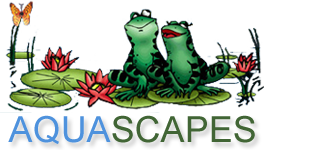
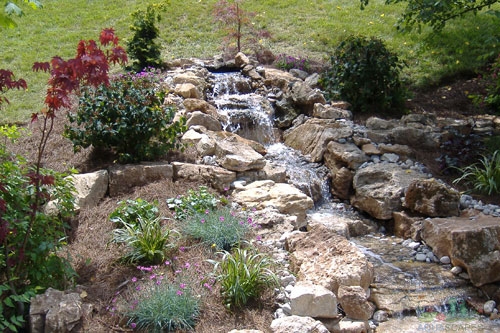
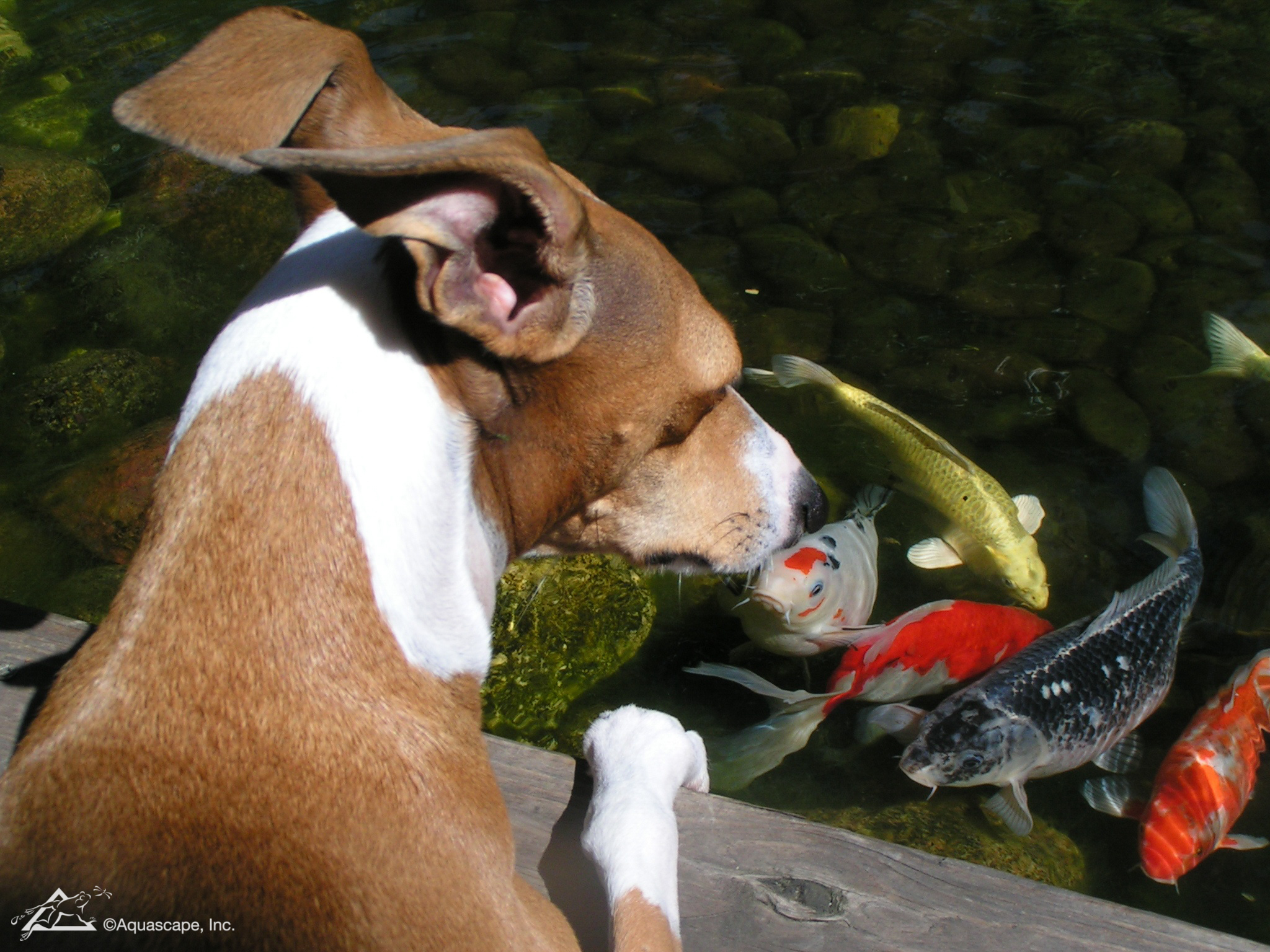
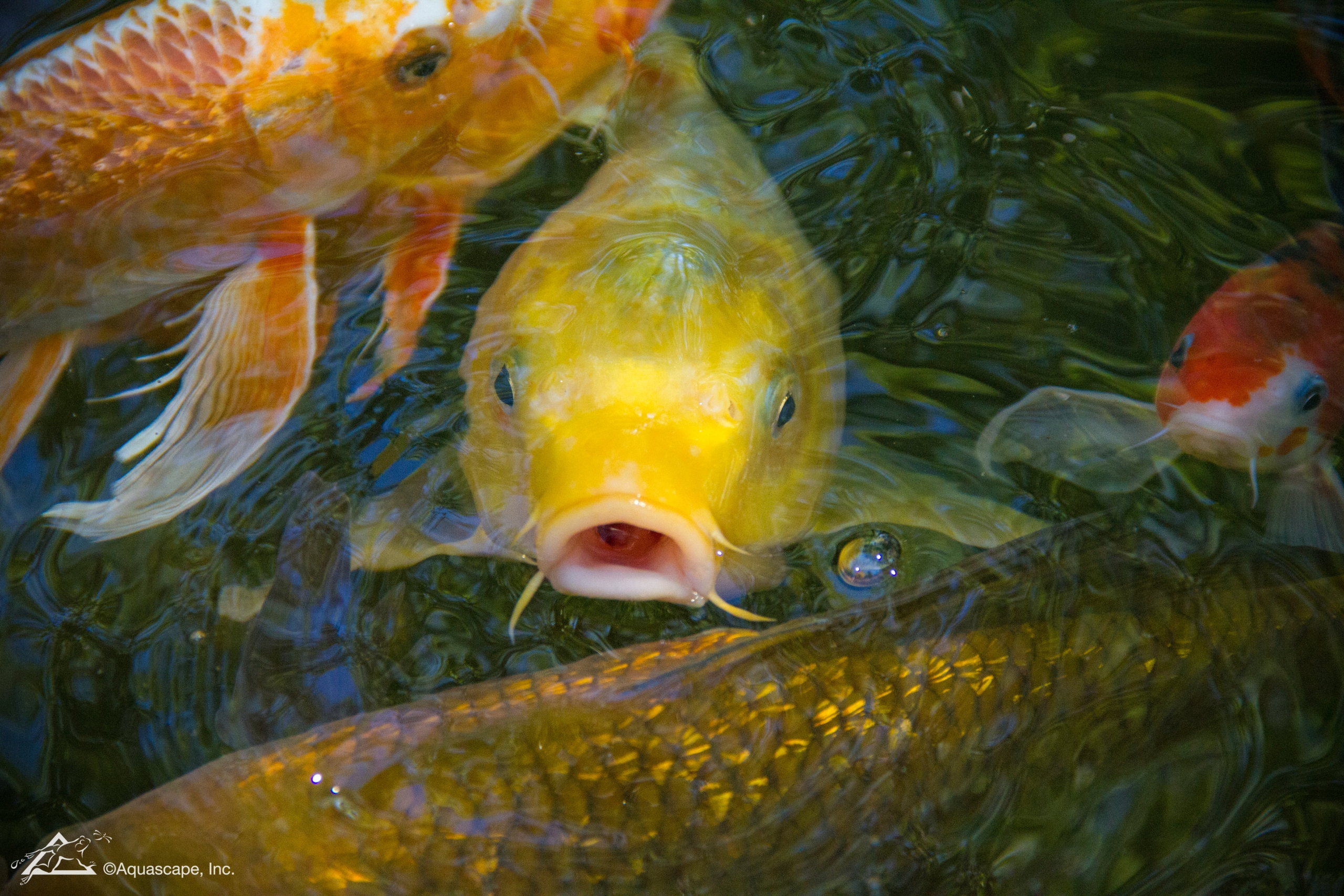
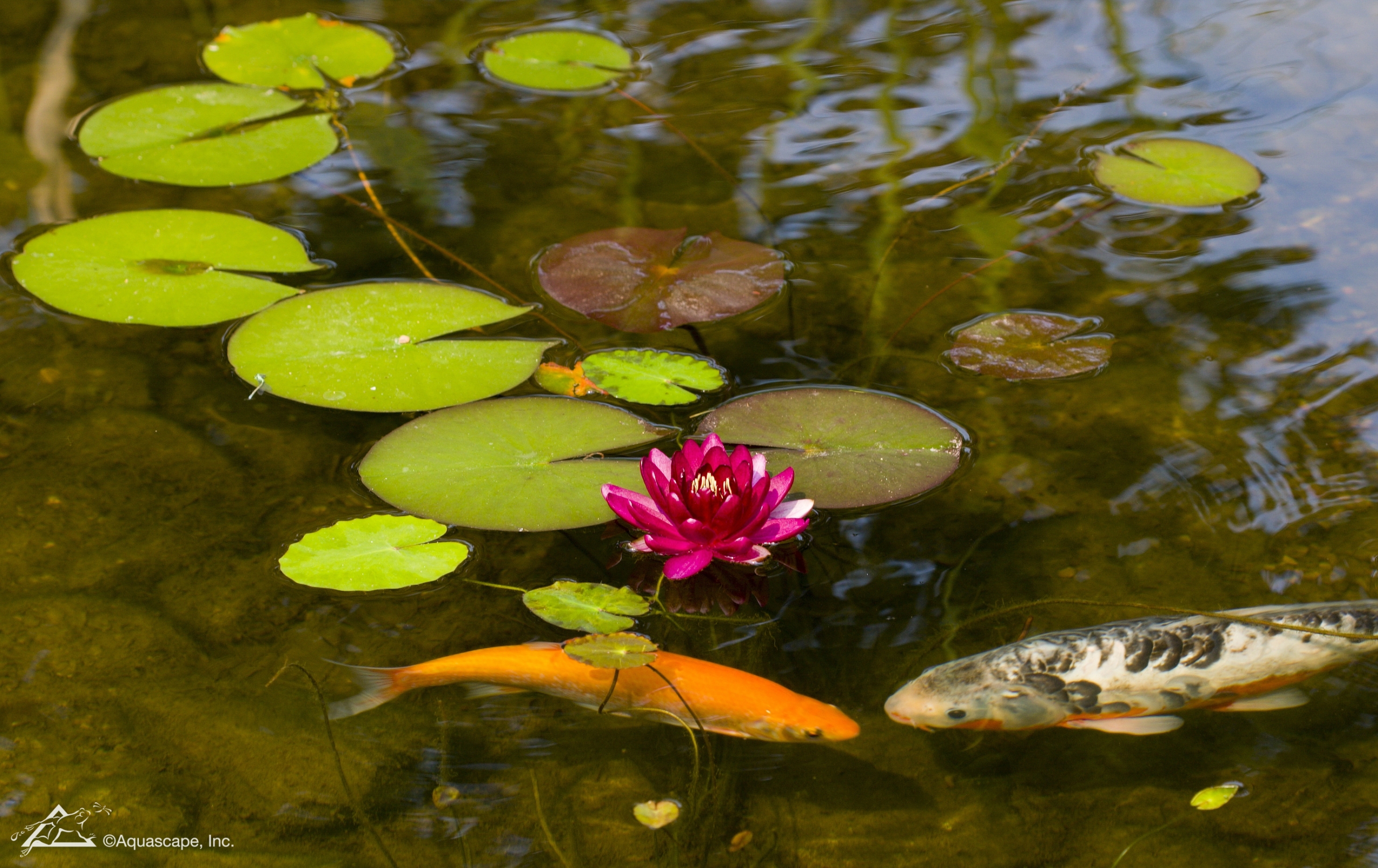


 Meyer Aquascapes
Meyer Aquascapes